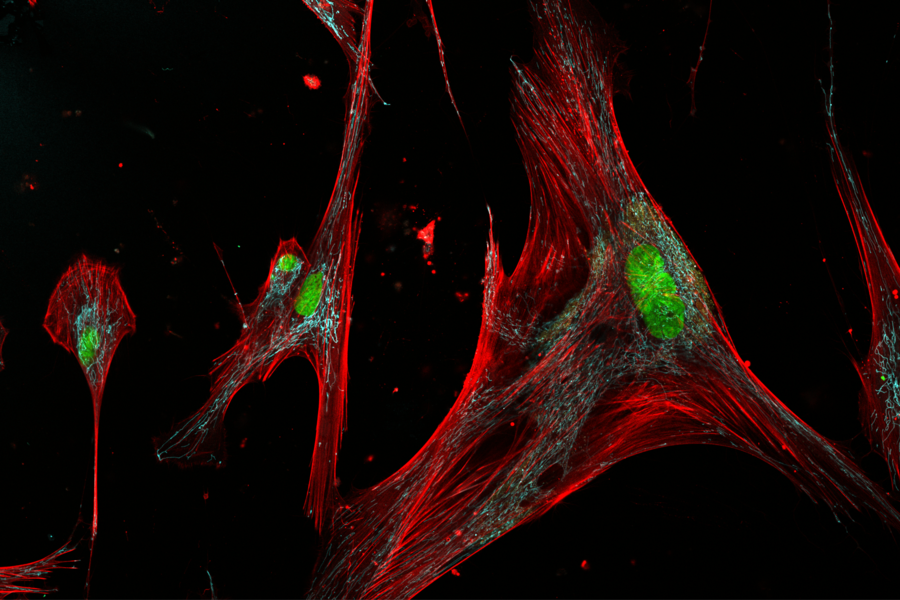2025-04-25 ジョンズ・ホプキンス大学 (JHU)

<関連情報>
- https://hub.jhu.edu/2025/04/25/zombie-cell-shape-related-to-subtype/
- https://www.science.org/doi/10.1126/sciadv.ads1875
加齢ヒト真皮線維芽細胞における老化の機能的サブタイプは単一細胞形態に規定される Single-cell morphology encodes functional subtypes of senescence in aging human dermal fibroblasts
Pratik Kamat, Nico Macaluso, Yukang Li, Anshika Agrawal, […] , and Jude M. Phillip
Science Advances Published:25 Apr 2025
DOI:https://doi.org/10.1126/sciadv.ads1875

Abstract
Cellular senescence, a hallmark of aging, reveals context-dependent phenotypes across multiple biological length scales. Despite its mechanistic importance, identifying and characterizing senescence across cell populations is challenging. Using primary dermal fibroblasts, we combined single-cell imaging, machine learning, several induced senescence conditions, and multiple protein biomarkers to define functional senescence subtypes. Single-cell morphology analysis revealed 11 distinct morphology clusters. Among these, we identified three as bona fide senescence subtypes (C7, C10, and C11), with C10 exhibiting the strongest age dependence within an aging cohort. In addition, we observed that a donor’s senescence burden and subtype composition were indicative of susceptibility to doxorubicin-induced senescence. Functional analysis revealed subtype-dependent responses to senotherapies, with C7 being most responsive to the combination of dasatinib and quercetin. Our single-cell analysis framework, SenSCOUT, enables robust identification and classification of senescence subtypes, offering applications in next-generation senotherapy screens, with potential toward explaining heterogeneous senescence phenotypes based on the presence of senescence subtypes.



